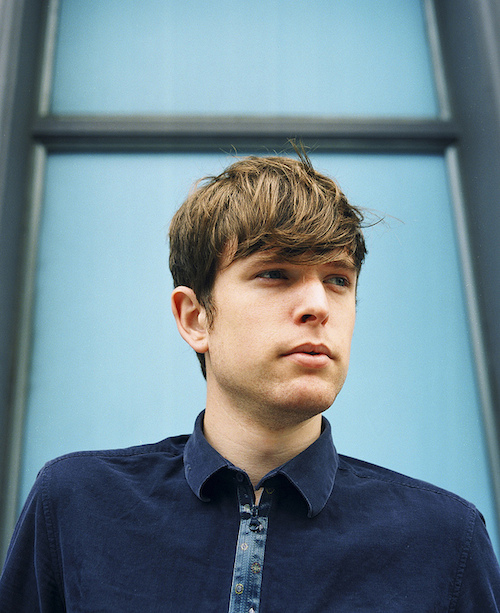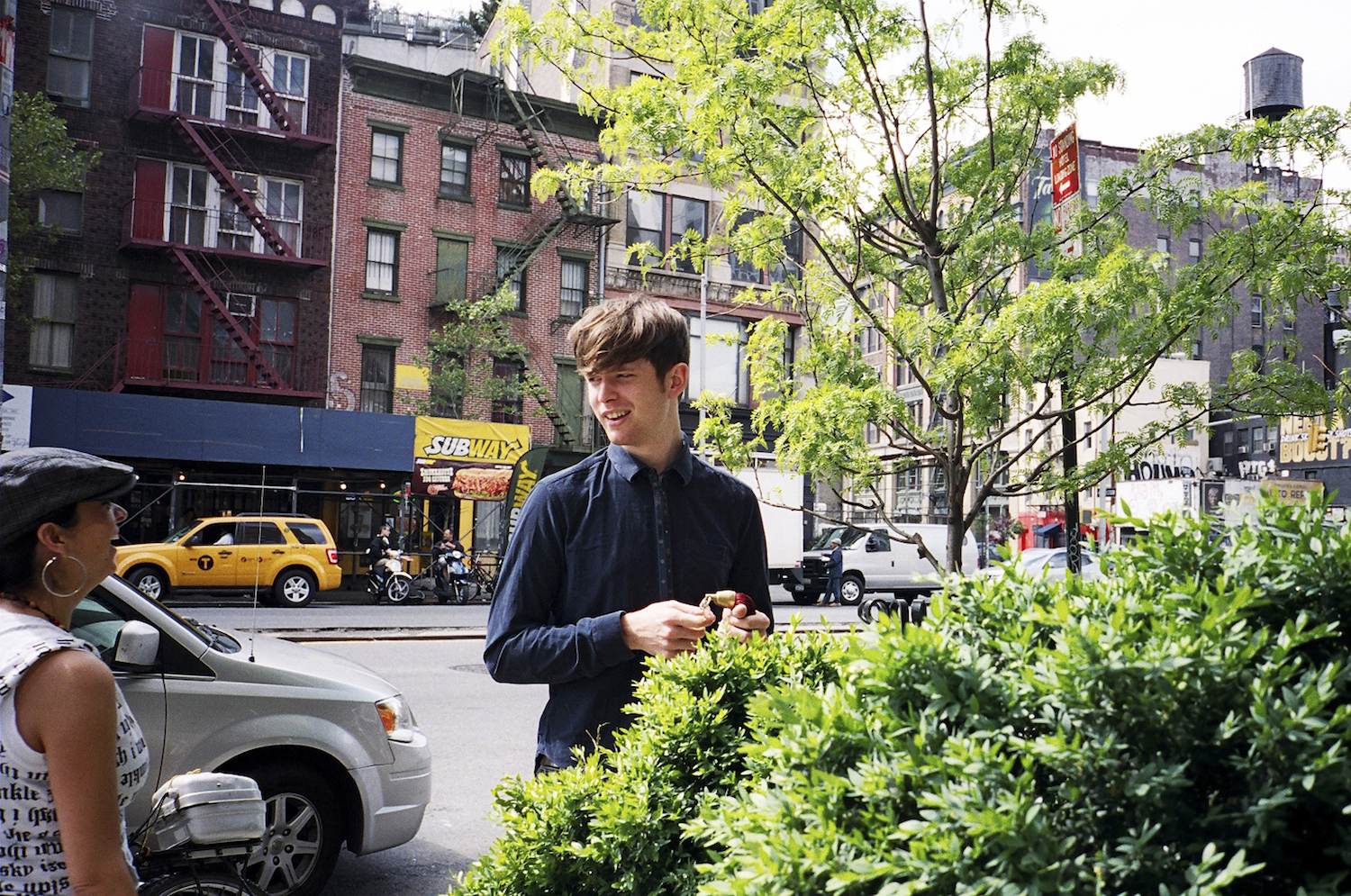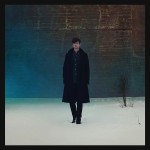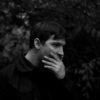Photos by Ysa Pérez
“I didn’t understand club music until I went to a club,” explains James Blake, in between bites of pesto-slathered pasta at The Bowery Hotel. “It sounds like I’m stating the obvious, but that is a concept that evades a lot of people who try to talk about electronic music without actually going to the places where it should be heard.”
For Blake, that didn’t happen until he was 15 and went to a Shoreditch party called Herbal. Before that turning point, he thought most radio-endorsed electronic music was “pretty much shit” and preferred spending his alone time with Lauryn Hill and D’angelo. Which explains how the singer/producer went from making post-dubstep perennials like “CMYK” to beat-laced balladry like this past spring’s Mercury Prize-winning Overgrown LP—it’s what’s been in his classically trained head all along.
In the following interview, we explore how Blake’s music has been largely shaped by his surroundings—the clubs we all take for granted…
Were you exposed to electronic music as a kid, or were you too focused on your classical studies to notice it?
I wasn’t really exposed to it at all until about 15. I hadn’t really heard any electronic music in a way I understood. I’d heard it in various European incarnations of techno and things like that but they were all more mainstream versions of those things. I didn’t understand club music until I went to a club. It sounds like I’m stating the obvious but that is a concept that evades a lot of reviewers and bloggers and people who try to talk about electronic music without ever going to the places where it should be heard.
Before you were 15, you must have listened to the radio though, and caught some of the stuff that was popular.
Yeah, but a lot of the stuff that was popular was quite shit. [Laughs] There were some pretty good UK garage tunes on the radio but apart from that, there wasn’t really anything that made me want to get into it. But having said that, a lot of garage music needed to be heard on a system in a club with a lot of people. When I finally did that, I understood more of the rhythm. It’s the equivalent of going to a gig and suddenly everything clicks. You feel the need to be involved in it as opposed to just hearing it in passing.
So what were you listening to before you went to a club? More hip-hop and stuff like that?
I would listen to D’angelo and Lauryn Hill quite a lot.
See, that’s something people don’t get about you—your roots are more in that than in electronic music.
Yeah, most definitely. Electronic music, to me, is a palette, a way of expressing myself, but the things I want to express aren’t always being in a club. That’s just not where I always am. And it’s not where I’ve always been, as much as it’s a massive part of my life. Trying to explain variation to people is quite difficult sometimes; it doesn’t seep in. I’ve actually been very lucky. People have allowed me space to move around—including the label, but most of all, fans.
Did you create the 1-800-Dinosaur label to have more of a clear division between what you’re doing on your albums and what you’re doing with your friends?
Maybe. It’s more to release dance music, to be honest. If I really love something and it’s not signed, I can put it out.
What was your first experience with dance music at a club?
The first club I went to would have been Herbal in Shoreditch. I loved it and I hated it at the same time. It was a bit of a testosterone-driven experience, as in almost everyone around me was on coke and wanted to start fights. That was my experience of early drum ‘n’ bass nights.
Wasn’t drum ‘n’ bass at its peak when you first started going out?
It was around 2000, so that was when drum ‘n’ bass started eating itself.
So you didn’t even get to see jungle when it was good?
Not when it was as big, no. So in that sense, I was born at the wrong time in terms of clubbing. Then this UK garage/2-step/dub thing started happening. I went to a couple of nights and I latched onto it straight away. It was more spacious, so I could understand it from the off, and there was room for musicality—discernible melodies and rhythmic shifts where I can hear the logic of it. But most of all, it was body music, like soul, African drumming and dub is. These types of musics that are a shit-hot drummer playing with a really good bassist. The feel of the music was relatable.
Whereas drum ‘n’ bass reached a point where it was just one ‘Amen’ break after another.
Yeah, it was horrible. And I couldn’t really listen.
Were your friends into it though?
I was into the jungle stuff. Those DJs would still play some of that; anything remotely Jamaican I was into, and anything that was just coked-up drum ‘n’ bass, I wasn’t. I wouldn’t have made that distinction then, but I can now that I know what was going on.
Everything’s come full circle, too. It does every time. And everything here in the states is a mutation of what happened first in the UK.
You could make a statement about house, jungle, drum ‘n’ bass and garage music, and you wouldn’t have to say anything for a while because it’ll just happen again. I’m not making a statement but…
http://youtu.be/FhfzFNu9I34

So what were some of the first events you went to? Was FWD>> one of them?
Yeah. I can’t remember who was playing, but I heard “Haunted” by Digital Mystikz. So it would have been Mala or Coki; you’d know if you were into them just based on the drums. It’s just an amazing rhythm, a rhythm unlike anything I’d ever heard before—a bassline that was really behind the beat. That was the tune, really, for me. It still is the tune.
What were the crowds like then? My understanding is it was a lot of people standing around, feeling the bass and not really doing anything…
The first nights I went to, people were either stoned or on Ketamine. They were standing near the speakers, not dissimilar from going to some sound system thing at the Notting Hill Carnival where people are just standing there, getting truly blasted and not really moving. You never misinterpret that as them not really enjoying the music. They’re having the time of their lives in a way [laughs].
It then went through this golden age where girls started arriving, and it was a real mix of crowds. It wasn’t just a gender mix; it was a racial mix that represented London in a microcosm. It was great. That was my favorite point, I think. Not to sound cooler than thou, but there’s a time in all musics that’s a critical point where it’s at its best. And that was that point.
So that would be 2010 or so?
2008, 9 or 10. And then the DMZ birthdays started getting more and more packed. You’d go in there and realize less and less people were into the actual music. They just wanted to be there, and go outside and smoke cigarettes. Meanwhile, all of the people who making it were still so into it.
People like Benga and Skream right?
Yeah, and they still are; they just have different audiences now. It’s not anyone’s fault. In the UK, it’s just another genre of music. But if you’re a kid from the Midwest and the first time you’ve ever seen dubstep is an insert-name-here EDM DJ and everyone’s going, ‘Oh, it’s dubstep!’, what are you supposed to think? You go along and it’s loud, and it’s exciting, and you drink some Monster [Energy Drink] because you’re underage, and you have a great time, and you tell all your friends about it, and word spreads, I think it’s great. I think it’s a really healthy thing to happen.
Well the doors eventually open to other things for most people.
After a while, it gets too abrasive, yeah.
Right, like when electronica was a thing, it was easy to get into Prodigy and things like that, then explore the early rave stuff—the roots of it all.
Just like how I discovered Band of Gypsys through D’angelo.
What’s DJing like for you now?
I’ll play a mixture of things, and it won’t all be known. It’ll be some dubplates, and mostly vinyl if I can get away with it. It’s harder to do now, and a lot of people have given up playing it, but I refuse to do that. But I’ll play a variety of things, and it won’t all be massively accessible, but it’ll all be danceable in some way.
As you’ve gotten to travel more over the past couple years, you must have witnessed some different dance scenes, like a techno club in Berlin where you’ll dance until 6 in the morning and it clicks that wow, you can actually listen to this stuff and not be bored to death of it.
Yes, absolutely. And without taking drugs, which is amazing. It’s rare that I go somewhere and see the local dance music thing and don’t like it. I’m not sure if that’s even happened to me. If you don’t like it, chances are you just don’t understand it. Or there’s reference points you haven’t seen before. Some types of music, if you’re completely alien to it, it’s a bit like going to Japan, where there are no reference points. Apart from things being built upwards, there’s no real things to hold onto unless you speak Japanese.
Which is why it’s so awesome though.
Right; it’s why it’s so fun, exactly why it’s one of my favorite places to go. It was the same way when we went to Brazil—I just wanted to go and hear local bands. And it was great because people were dancing. I was dancing, and I was drinking, and everyone was having a great time. Then I went to Berlin…
And who was playing?
[Ricardo] Villalobos.
Well that’s not a bad guy to hear.
Exactly—not a bad entry point to Berghain. That was, I mean…
People’ll listen to him for 15 hours.
And I did; well, I listened to him for at least four. And then we stayed there all night. I had an amazing time.
Was that the first time you heard that kind of music consistently?
Yeah, you have to break yourself in like a new pair of boots. You’re a new pair of boots every time you hear a genre you don’t necessarily understand. Give it a few hours of hearing that same beat over and over, and you will, most certainly, understand it. If you listen to something enough, it will filter into your subconscious and you’ll remember it. The repetitious nature takes you away.
What were some key records that have stuck with you in recent years?
The record that pretty much started it was “Midnight Request Line” by Skream. That has to be mentioned. And “Haunted.”
Why those two?
They’re very simple. People started dancing halftime, almost like they would for dub. “Midnight Request Line” was a mission statement of halftime. Suddenly it was like, there’s the beat. And then everything fit in between those two flagpoles. “Haunted” brought a serious attention to the bassline and what became ‘wobble’. The effect of it was, well, you kinda have to hear it. Nothing quite like that has been made since then.
Did these tracks feel inherently limiting then, in the same way a 4/4 beat is?
No, that’s what attracted me to it. If anything, the reason I’ve never written 4/4 music is because every time I sit down and try that, I feel like my chords are getting less and less important. It works for a lot of people but it doesn’t for me, so dubstep gave me all this space for musicality in between the 1 and the 3.
When people started using that ‘wobble’ term to group producers together, did it feel like that was when dubstep started eating itself?
No, I don’t think it ever really ate itself. It just moved; like a virus, it just attacked other areas and was constantly mutating. I suppose if you went to a dubstep club now, it might feel like one of those old drum ‘n’ bass nights, where the original feeling is lost and you’re just listening to the post-apocalyptic remnants of what was once great.
The previous interview originally ran in the summer issue of our quarterly journal. Read the rest of it on your iPad here, or pre-order our new app and next issue through a limited lifetime subscription offer at The Merch Table.



